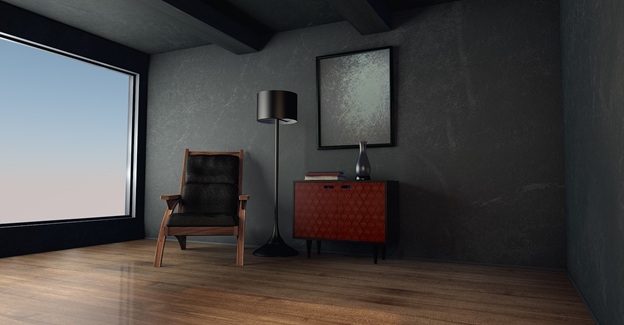Basic Rules Every Landlord Should Include in Their Rental Agreement
|
by Tina Hizon
•
Aug 10, 2017
•
General
|

Every landlord knows that setting down rules for tenants is important for a smooth landlord-tenant relationship and an overall pleasant renting experience. These rules, when put into writing through a lease or rental agreement, will serve as protection for both sides and give legal recourse should anyone break any of the rules stipulated in the contract.
The following are basic rules that every lease agreement should have. Make sure that your tenant understands and agrees to all of the items included in your agreement before you have him sign.
1. Rent Due
Be specific in your agreement the amount of rent on a monthly or other basis, when payment is due and when it is considered late, and your preferred mode of payment. If you wish to discourage renters from paying late, you can set penalty fees for late payments or set charges for bounced checks.
2. Deposit and Advance Payment
A security deposit is usually required by landlords from their tenants to ensure that they (tenants) keep to their agreement. It is refunded at the end of the lease period if the tenant has lived up to the terms of the lease. Unfortunately, the security deposit is the usual cause of tension and confusion between landowners and tenants.
To avoid misunderstandings, you have to make it clear and specific in your agreement how the deposit will be used and returned. Security deposits are usually used to cover repair costs to damages caused by the tenant to your property. The remaining amount, should there be any left, is then returned to the tenant.
A full or partial advance payment is used by landowners to protect themselves from tenants moving out without paying before their lease term expires. The payment can be used to cover rent for the last month or entire duration of the lease depending on how much (advance payment) is made, how much rent is charged, and when rent payments are due. If you require advance rent, you have to specify it in the contract.
3. Your Right of Entry
Include in your agreement when it is legal and proper for you to visit the property (i.e. to make repairs, regular maintenance, etc), and specify as well the least amount of time notice will be given to the tenant before the said visit. This is to avoid tenants claiming illegal entry or violation of privacy.
4. Names of All Tenants
The agreement should include the names of all the tenants who will be residing in your property. Including the names of the tenants ensures that each one of them is responsible for the terms of the rent and that they are the only ones authorized and acknowledged to live in your premises. This will give you grounds for eviction should any of your tenants sublease to a stranger or let a friend or relative move in without your permission.
5. Pets (Allowed/Disallowed)
It is your right as a landowner to decide if pets are allowed within your premises (if your property is in a condominium, check with the administration first if they allow pets in their building). If you do allow pets, you have to specify the kind and size limit of pets tenants are allowed to bring in. Include instructions on how they should care for their pets in your property (i.e. if they should be leashed when in hallways or in common grounds).
Part 2 will be added next week :)
Happy Renting!
The following are basic rules that every lease agreement should have. Make sure that your tenant understands and agrees to all of the items included in your agreement before you have him sign.
1. Rent Due
Be specific in your agreement the amount of rent on a monthly or other basis, when payment is due and when it is considered late, and your preferred mode of payment. If you wish to discourage renters from paying late, you can set penalty fees for late payments or set charges for bounced checks.
2. Deposit and Advance Payment
A security deposit is usually required by landlords from their tenants to ensure that they (tenants) keep to their agreement. It is refunded at the end of the lease period if the tenant has lived up to the terms of the lease. Unfortunately, the security deposit is the usual cause of tension and confusion between landowners and tenants.
To avoid misunderstandings, you have to make it clear and specific in your agreement how the deposit will be used and returned. Security deposits are usually used to cover repair costs to damages caused by the tenant to your property. The remaining amount, should there be any left, is then returned to the tenant.
A full or partial advance payment is used by landowners to protect themselves from tenants moving out without paying before their lease term expires. The payment can be used to cover rent for the last month or entire duration of the lease depending on how much (advance payment) is made, how much rent is charged, and when rent payments are due. If you require advance rent, you have to specify it in the contract.
3. Your Right of Entry
Include in your agreement when it is legal and proper for you to visit the property (i.e. to make repairs, regular maintenance, etc), and specify as well the least amount of time notice will be given to the tenant before the said visit. This is to avoid tenants claiming illegal entry or violation of privacy.
4. Names of All Tenants
The agreement should include the names of all the tenants who will be residing in your property. Including the names of the tenants ensures that each one of them is responsible for the terms of the rent and that they are the only ones authorized and acknowledged to live in your premises. This will give you grounds for eviction should any of your tenants sublease to a stranger or let a friend or relative move in without your permission.
5. Pets (Allowed/Disallowed)
It is your right as a landowner to decide if pets are allowed within your premises (if your property is in a condominium, check with the administration first if they allow pets in their building). If you do allow pets, you have to specify the kind and size limit of pets tenants are allowed to bring in. Include instructions on how they should care for their pets in your property (i.e. if they should be leashed when in hallways or in common grounds).
Part 2 will be added next week :)
Happy Renting!
Comments 💬









